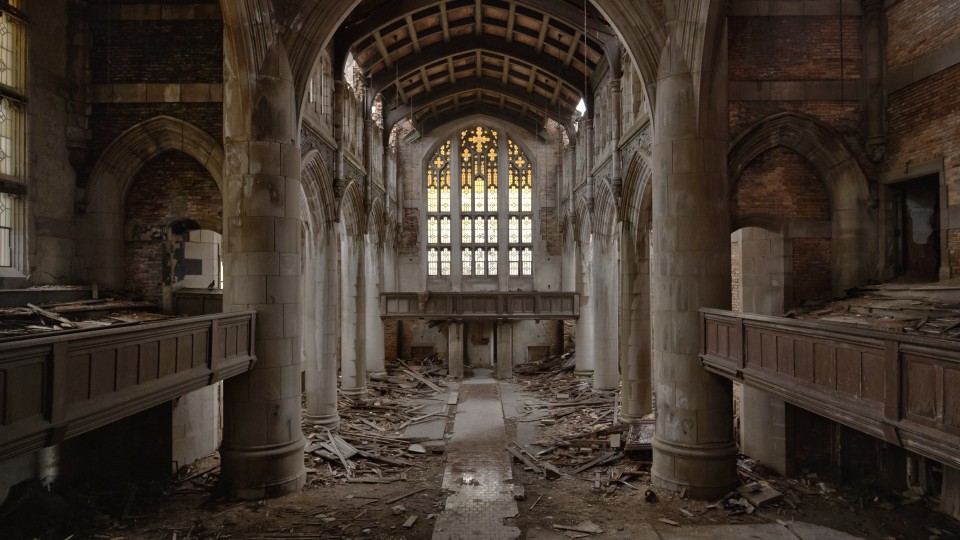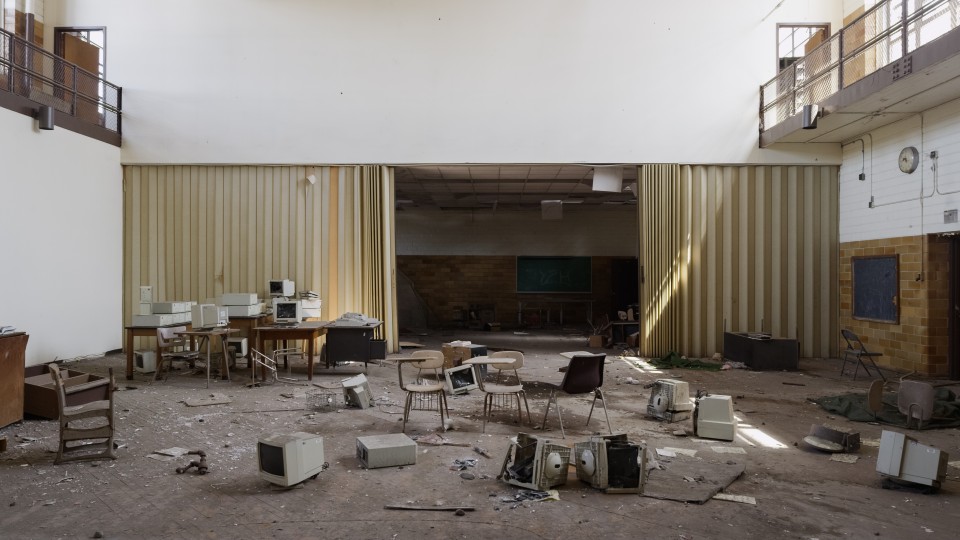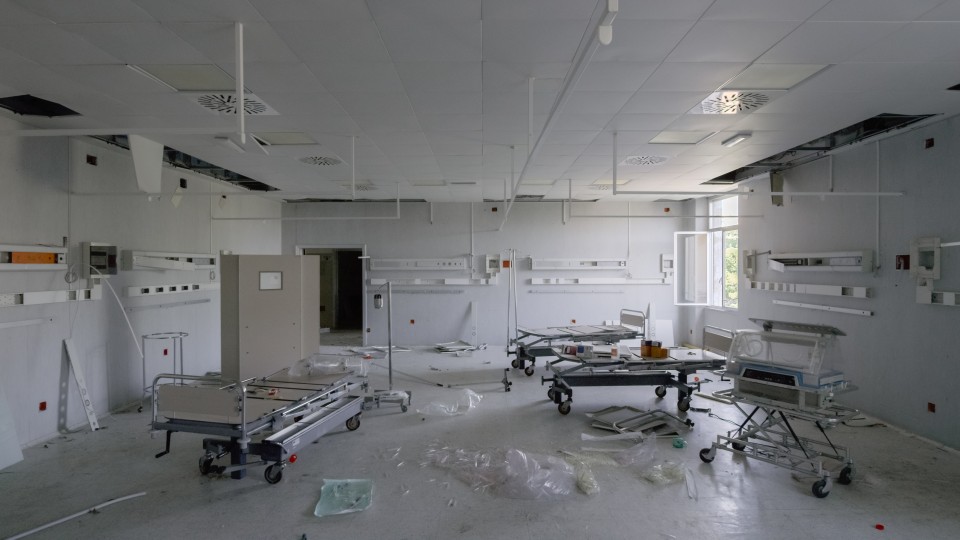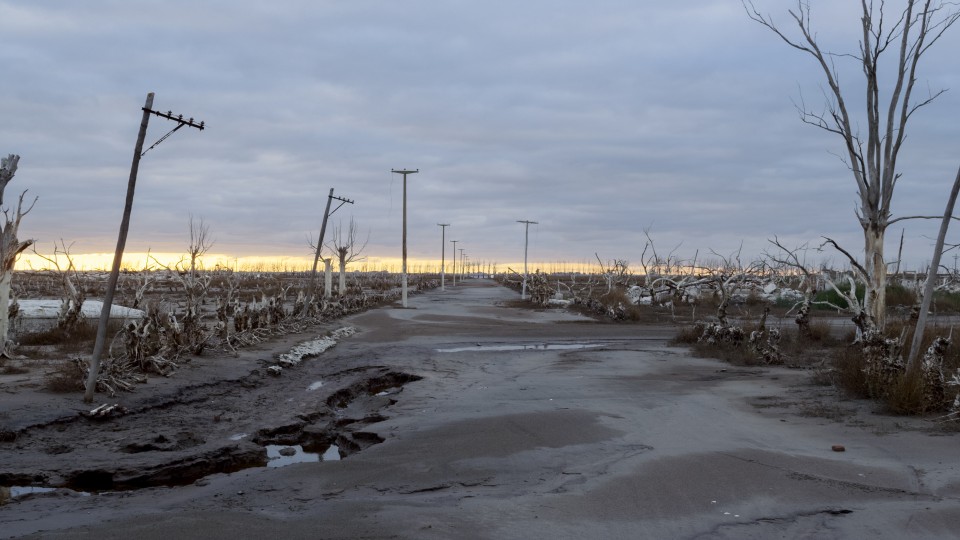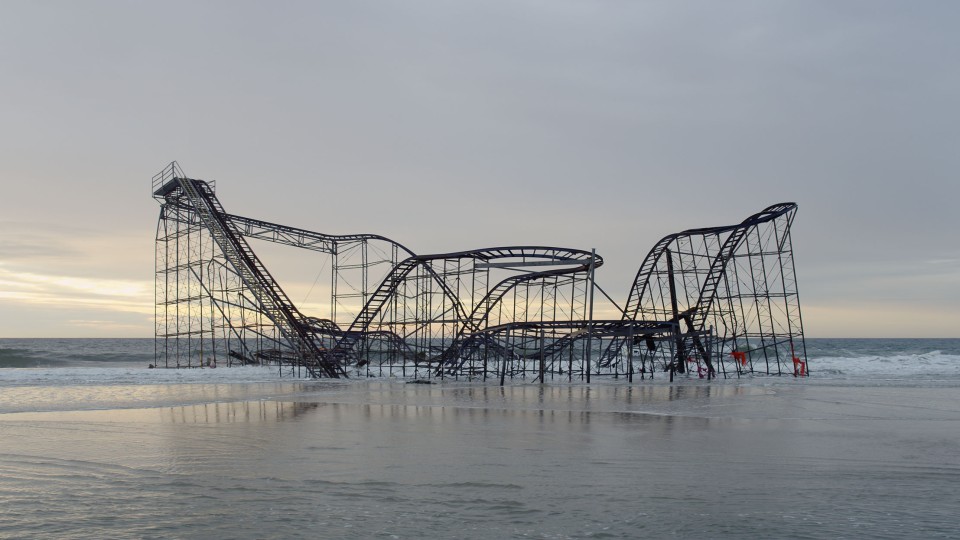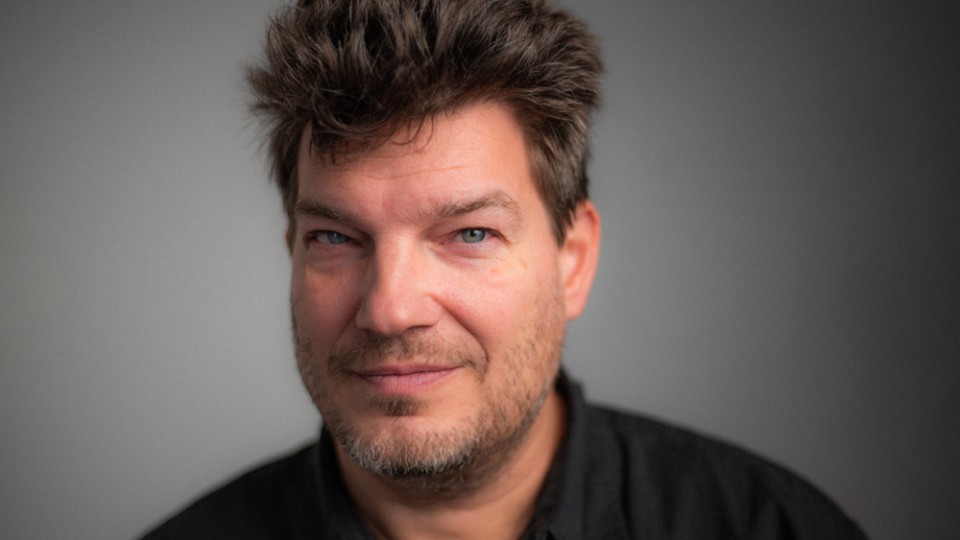Nikolaus Geyrhalter talks about Homo Sapiens a silent and haunting meditation on the fragility of human existence. The film is part of the 2016 Berlinale Forum selection.
Homo Sapiens is rather unusual for a documentary film in that it takes as its subject something which no longer exists. It shows a possible vision of the future. Mankind, which has been the focus of most of your work until now, is no longer there. What prompted you to adopt this radical approach?
NIKOLAUS GEYRHALTER: First of all, I wouldn't really describe Homo Sapiens as a documentary film. It's a film. The film industry and film festivals need categorization. In this case it only partly applies, in my view. The film may perhaps be rather closer to a documentary film than a feature film. But one reason why I consider Homo Sapiens a very fictional production is that we intervened a lot and changed a lot. The trees, the buildings and even the wind were almost like actors for me. It wasn't my intention at any time to depict a documentary reality here. For me it's a vision which is closer to fiction. The documentary aspect of the film is the fact that the buildings and landscapes can be found now, in the present day, or at least could be until they were pulled down.
In films like Our Daily Bread and Over The Years you show machines playing an increasingly dominant role in working life, while the human aspect of work is edged out. The subject of Homo Sapiens is the state of the world after mankind and after machines. How could that state be described?
NIKOLAUS GEYRHALTER: That's only one possible way of reading the film, though of course it’s designed so that interpretation is very plausible. But I wouldn't like to see the film reduced to a single post-apocalyptic scenario, because despite this possible retrospective view of mankind, for me it’s still a film that very powerfully portrays this moment. By being so radically absent, human beings are all the more present. In that sense it is a film about people even though they are not there.
In that sense Homo Sapiens is your most fictitious film, because every abandoned, faded, rotting location that has gone to seed is charged with a past story. But at the same time it is left entirely to each viewer to come up with his or her own hypothesis.
NIKOLAUS GEYRHALTER: And that’s how it should be.
The title of the film is taken from the scientific designation of the human species, which appears to have become extinct in this film. What motivated you to choose this title?
NIKOLAUS GEYRHALTER: For a long time we used the working title "Someday", though we knew we'd have to find a better solution because that title anticipated too clearly a future scenario when people would no longer exist. I wanted to leave that interpretation open but without suggesting it was the only way of looking at the film. I'm increasingly interested in mankind and the question of what we are doing here, what we will leave behind us. There is definitely the sense of responsibility towards the environment. That's why it was important to get human beings into the title, and we spent a very long time looking for the right wording. I think it's a good variation on the scientific term homo sapiens, precisely because in this context you simply wouldn't expect the absence of human beings, but it also has archaeological and historical associations.
The images often suggest that the places were abandoned suddenly, by everybody involved, which raises the question of how that might have happened. What criteria did the research team use when looking for suitable locations?
NIKOLAUS GEYRHALTER: The research became increasingly specific. At first we were just looking for deserted places. Deserted in the sense of abandoned. Places like that are easy to find, but we discovered that it quickly became trite. What we needed were places that had stories attached, where you could see what they had once been. An empty factory, a ruined house – that wasn't particularly interesting. It was important that the places had stories without necessarily making you sympathize with them. We began concentrating on searching for places with a history that could be read without explanation, places that were impressive due to their dimensions or because they were in an advanced state of being reclaimed by nature. And while we were editing it quickly became apparent that the film somehow had to move on constantly to new aspects. The most important point was to find places that matched our premise: we wanted to create a critical look backwards at mankind.
You can very quickly make out and identify urban infrastructures and institutions in these ruins.
NIKOLAUS GEYRHALTER: Yes, the focus is very much on the human system and the question of how people have organized themselves. There was a conscious decision not to show any private spaces. Naturally the ease of identification is due to the choices we make. There were plenty of places that didn't contain that possibility, so it was crucial that the places and the images should be able to tell stories about their past. We have passages where we intercut shots of different places to form coherent sequences, and it wasn't important where they were actually filmed. And then later there are specific places which can be recognized as connected structures, or as islands for example. In those cases there was a different aim: to present the geographical range of complete destruction.
Image and space could be described as something like the twin pillars of your work in film. Here it seems as though you were able to concentrate almost exclusively on this and pursue the challenge of taking what is available in a virtually pure form.
NIKOLAUS GEYRHALTER: It's not the first film where I construct a narrative only through images. It's just the first one where the images don’t have any people in them. Homo Sapiens is perhaps the most photographic of all my films. The image has always been important to me, increasingly so, and here it almost plays the leading role. Filming Homo Sapiens was a process of dealing with what was available – but we manipulated what was available whenever we felt it necessary. For example, we created wind. At some point during the editing process it became apparent that there was no movement in many of the interiors, and it wasn't possible to deal with this lack of life just by adding sound. Sometimes we arranged the lighting, and often we used digital aids to make the objects more perfect and retain concentration. We didn't want any human noises at all to be heard, which meant we could hardly record any original sound at all. The sounds that we hear were created carefully for each image, from archive material and a great deal of sound recorded especially for that purpose.
To what extent did the filming take you all around the world?
NIKOLAUS GEYRHALTER: We did a lot of filming in Europe and the USA. We found a place in Argentina that had been swallowed up by a salt lake, and then the water had sunk again, leaving everything white from the salt. We got there at precisely the right time, when there weren't any footprints to be seen, and the sky was absolutely perfect as well. That's a five-minute sequence in the film that we captured one afternoon. We also did a lot of filming in Japan, partly because of the abandoned island at the end of the film and also because of Fukushima. The film begins with the mosaics on the Buzludzha Monument in Bulgaria, and then there are sequence with images from Fukushima where you don't know for a long time what's really going on, because the deterioration hasn't progressed very far yet. We were filming about 4 km from the nuclear power station.
In a film which manages without language and people, the rhythm becomes all the more important. Were the variations in the sequence length an intuitive part of filming, or was that exclusively part of the editing process?
NIKOLAUS GEYRHALTER: We agreed at a very early stage that the rhythm would be slow, and that each scene would be filmed for about a minute. In the final film that comes down to about half a minute. When we started editing first of all we arranged the images according to theme, without worrying about the rhythm at all, to see how the arc would work. Then, on the basis of that version, Michael Palm began to work on the rhythm of the sequences. So images that take longer to digest, that you want to watch for longer or that have a different rhythm because of the wind, are shown for longer than the others. It was the first time Michael Palm had edited one of my films. The aim is to find the appropriate rhythm for the images, the right breathing speed and suitable context. That's not my strength, and I'm glad to leave it to someone else. This is clearly a film where a very slow rhythm is appropriate, and that is apparent from the first minutes. The audience knows from the beginning what to expect.
This film, without people or language, needs a strong sound component. You were working with Peter Kutin on this. What did the sound work involve?
NIKOLAUS GEYRHALTER: I really don't know who could have done this better than Peter Kutin, because I don't know anyone else who lives with sound to such an extent. Peter Kutin has often handled sound design for me. But in the case of Homo Sapiens it was sound design in an extreme dimension, because virtually everything was open. Apart from a very few locations, Peter got a silent movie with only provisional atmospheric sound from the editing room. We analyzed very closely what you could hear in each case: a sheet of paper in the wind, a piece of metal screeching, a bird. It was as if you were adding music to a silent film. It was a process that took years, and it still exciting, to the very end.
How long have you been working on Homo Sapiens?
NIKOLAUS GEYRHALTER: It must be four years. Not exclusively, but we constantly came back to it. Things kept on changing. We had to drop some places because they were demolished before we could film them, and others were added. Again and again we turned up somewhere to start filming, and there was nothing left but waste land. It often happened really fast: the radar dish you can see in the film didn't exist the following day. Sometimes we were very lucky. While we were filming the slaughterhouse the far end of the building was already being demolished. We very often found places on the Internet we would have liked to film and then discovered they weren’t there any more. The island in Japan, on the other hand, is an old mining island that became unprofitable, but now it's the subject of a preservation order. It will be left to decay until it doesn't exist any longer. A lot of isolated buildings in cities either don't last very long or nothing happens to them because there’s an issue about ownership of the property. Research continued in the background constantly, though, and there was always plenty going on. The film doesn't have any natural end, either. You could carry on filming forever.
Interview: Karin Schiefer
January 2016
Translated by Charles Osborne

